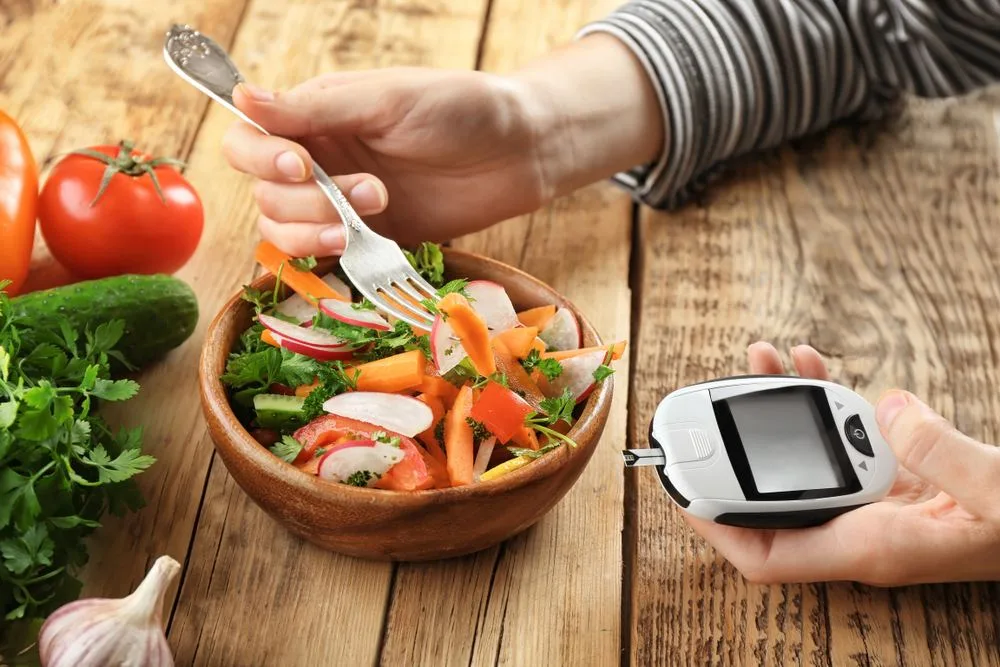Managing diabetes can be overwhelming. But living healthily can make it a lot easier. Having a diabetes meal plan will help you reduce your risk of complications.
This article will provide you with the simplest and most convenient ways to make a healthy diabetes meal plan. These diet plans are simple, delicious, and nutritious.
An American Diabetes Association(ADA) study revealed that diabetes patients who adhere to the ADA dietary guidelines have better glycemic control.
Why Should You Have a Healthy Meal Plan for Type 2 diabetes?
Photo by Ella Olsson
Type 2 diabetes is a chronic condition. There is no cure for it now; you can only manage it. As a type 2 diabetes patient, having a healthy meal routine will help you manage your condition effectively. You will get to avoid overloading your body with sugar and unnecessary calories. It will also help you lose weight.
Eating healthy will set your blood sugar in a healthy range, reducing your risk of developing complications like heart disease. In addition, creating a healthy meal plan will help you stay well-organized and reach your goals easily.
Creating a Healthy Diabetes Meal Plan
Creating and strictly following a healthy meal plan can initially be difficult. But, with discipline, it is achievable. There are numerous approaches to making a meal plan. You should seek the help of experts to choose the best method from one of the following:
1. The Diabetes Plate Method
Knowing what to eat, how much to eat, and the right combination is often complicated. The diabetes plate method is a simple and easy approach to finding solutions to those problems.
The American Diabetes Association has provided simple guidelines for embarking on a plate method:
- Get a 9 inches plate;
- Divide the plate using an imaginary line into four equal parts;
- Fill half of the plate with non-starchy vegetables such as broccoli and cauliflower;
- Fill a quarter with proteins such as fish, chicken, cheese, beans, and peas;
- Fill the last quarter with whole-grain carbohydrates such as brown rice, millet, barley, and oatmeal;
- Top this with a glass of water or any other zero-calorie drink, such as unsweetened tea or non-fat dairy products;
- Add fruit and small amounts of healthy fats such as nuts, olive oil, and avocados.
With this, your well-balanced meal is ready. This method is stress-free and does not require prior knowledge.
2. The Carbohydrates Counting Method
The carbohydrate counting method is a meal planning method for individuals managing diabetes, especially for those taking insulin. It involves keeping records of the number of carbs you eat and drink daily. Carbohydrates are broken down into glucose and impact the blood glucose level most.
You may need to learn how to measure and calculate the number of carbs in your meal to help you control your blood sugar. You can learn this from your dietitian or a diabetes monitoring app like ours. This knowledge will also help you dose your insulin appropriately.
They will teach you how to read and interpret food labels. It would help if you also learned how to readjust your insulin dose according to your blood glucose level.
3. Choosing Your Food Method
Your dietician may recommend choosing specific foods as part of your diabetes management plan. You will be given a long list of food from different food categories. They will then help you plan your diet according to your choices.
A serving in each category, such as carbohydrates, proteins, and vegetables, is called a “choice.” This is because each of the food choices will have the same effect on your blood glucose.
This method will help you make informed choices while eating healthy and delicious.
4. The Glycemic Index Method
Some diabetes patients use the glycemic index to determine the number of calories in their meals. This method categorizes carbohydrates based on their calorie content and effect on blood glucose. Your dietician will know best if this method works for you.
5. The Portion Size Method
This strategy involves using everyday objects or your hand to determine portion sizes. Portion sizes of food differ from person to person. It depends on your calorie needs. Some established ones include:
- A ping-pong ball is the equivalent of two tablespoons of peanut butter.
- A serving of waffles or pancakes is equivalent to a DVD.
- A half-cup of cooked rice or pasta is equivalent to a tennis ball or rounded handful.
- A 3-ounce serving of fish is a checkbook.
- A serving of cheese is six dice.
You should talk to your dietician if this method is okay for you.
Photo by Micheile Henderson on Unsplash
When should you eat if you have type 2 diabetes?
Knowing when to eat as a type 2 diabetes patient is as important as knowing what to eat. However, the timing depends on what medication and type of insulin you use. Some people with type 2 diabetes need to eat at about the same time daily. In contrast, others can be more flexible with their timing.
If you are on a specific diabetes medication, not eating at the required time can lower your blood sugar level. It would be best to talk to your doctor to choose the best time to eat.
Final Thoughts
Making a healthy diabetes meal plan has lots of benefits. First, it will help you keep your blood glucose under control. It also reduces your risk of complications from diabetes. There are several methods, such as carbohydrate counting and the diabetes plate methods, from which you can decide. Klinio has employed health care professionals to provide you with a personalized diet plan.


